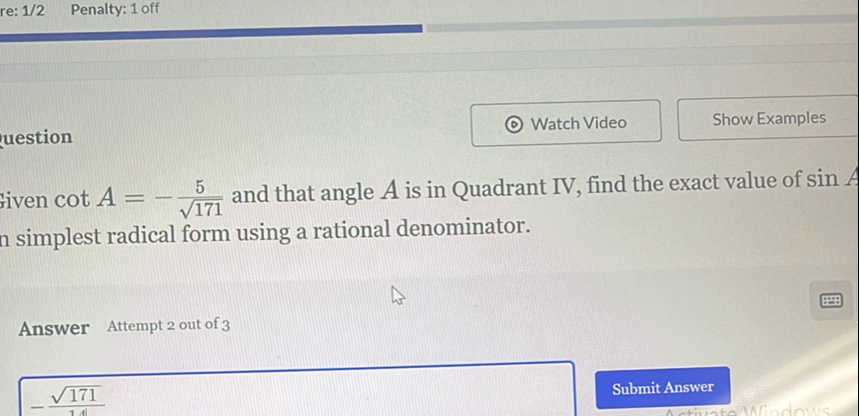Full solution
Q. Given and that angle is in Quadrant IV, find the exact value of n simplest radical form using a rational denominator.Answer____
- Use Pythagorean Identity: Use the Pythagorean identity for cotangent and sine: . Since we know , we can find and then .
- Calculate : Calculate using the identity: . Substitute into the identity.
- Find : Find by taking the square root of .
Since we need a rational denominator, rationalize the denominator. - Find : Since is the reciprocal of , we can find by taking the reciprocal of .
- Simplify : Simplify the expression for by dividing both the numerator and the denominator by the greatest common divisor, which is .
- Include negative sign: Since angle is in Quadrant IV, must be negative. Therefore, we must include the negative sign in our final answer.

